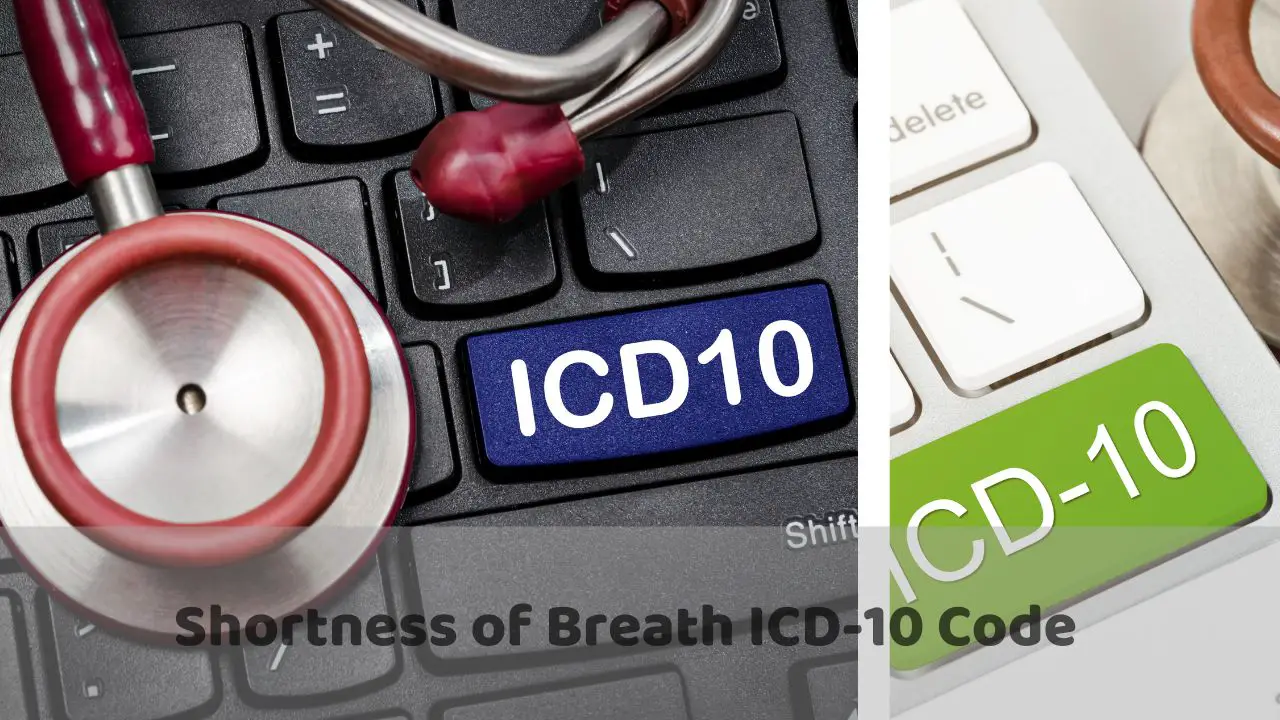Shortness of Breath ICD-10 Code :The International Classification of Diseases, 10th edition (ICD-10), is a standardized system for classifying and coding diseases, medical conditions, and health-related issues. It is used by healthcare professionals, medical coders, and institutions worldwide to systematically record, manage, and communicate health data. ICD-10 plays a crucial role in ensuring uniformity in healthcare records and statistics, enabling healthcare providers, researchers, and policymakers to understand and address public health challenges effectively.
Importance of ICD-10 coding in healthcare
The significance of ICD-10 coding in healthcare cannot be overstated. This coding system serves as a common language that allows healthcare professionals to document and communicate complex medical information. Precise and consistent coding is essential for various aspects of healthcare, including clinical care, billing, and public health analysis. It enables healthcare institutions to track patient outcomes, manage resources efficiently, and contribute to vital research and epidemiological studies.
Statistical Insight: The United States had transitioned to ICD-10 in 2015. According to the Centers for Medicare & Medicaid Services (CMS), this transition to ICD-10 was accompanied by a substantial increase in the number of available diagnosis codes.
There are over 68,000 diagnostic codes in ICD-10, a significant expansion from the approximately 13,000 codes in ICD-9. This extensive coding system allows for a more detailed and accurate representation of patient conditions and a more comprehensive understanding of healthcare trends and needs.
The role of ICD-10 in categorizing and tracking shortness of breath
ICD-10 is a powerful tool for categorizing and tracking medical conditions, offering a structured framework that allows for the classification of conditions such as shortness of breath and their associated causes. When patients present with symptoms like shortness of breath, healthcare professionals can use ICD-10 codes to precisely categorize the condition, identify underlying causes, and track how it impacts patient health over time.
Statistical Insight: In the context of shortness of breath, data from the World Health Organization (WHO) highlights the global impact of respiratory conditions. According to WHO, respiratory diseases were the fourth leading cause of death worldwide in 2017. Conditions such as chronic obstructive pulmonary disease (COPD) and asthma can lead to symptoms like shortness of breath, making the accurate tracking and coding of these conditions vital for healthcare systems.
The ICD-10 system serves as the backbone of healthcare data management, and understanding its role in categorizing and tracking medical conditions is essential for delivering quality patient care and advancing medical research. In the following sections, we will delve into the specific details of ICD-10 coding for shortness of breath and its implications in healthcare.
Understanding Shortness of Breath
A. Definition and causes of shortness of breath Shortness of breath, also known as dyspnea, is a distressing sensation of breathlessness or difficulty in breathing. It can manifest as rapid, shallow breathing, and may be accompanied by feelings of suffocation or anxiety. Shortness of breath can have various causes, including but not limited to:
- Respiratory Conditions: Underlying respiratory issues such as asthma, chronic obstructive pulmonary disease (COPD), pneumonia, or interstitial lung diseases can lead to shortness of breath.
- Cardiovascular Conditions: Heart problems like congestive heart failure or coronary artery disease can result in reduced oxygen delivery to the body, leading to dyspnea.
- Anxiety and Panic Disorders: Anxiety-induced shortness of breath can occur in response to stress or panic attacks.
- Anemia: Low levels of hemoglobin in the blood can decrease oxygen delivery, causing breathlessness.
- Physical Exertion: Intense physical activity can lead to temporary shortness of breath.
- Environmental Factors: Exposure to allergens, pollutants, or high altitudes can trigger breathlessness in susceptible individuals.
B. The significance of accurate diagnosis and coding Accurate diagnosis and coding of shortness of breath are paramount for several reasons:
- Tailored Treatment: The underlying cause of shortness of breath significantly influences treatment. Accurate diagnosis ensures that patients receive the appropriate care, which may range from medication for a specific condition to anxiety management techniques.
- Resource Allocation: Healthcare institutions rely on accurate coding to allocate resources efficiently. Proper coding helps in estimating the burden of specific conditions and planning for necessary medical equipment, medications, and healthcare personnel.
- Epidemiological Research: Accurate coding is vital for conducting epidemiological studies. It allows researchers to track the prevalence and impact of specific conditions, including shortness of breath, in various populations.
- Billing and Reimbursement: Accurate coding is essential for healthcare providers to bill insurance companies and receive reimbursement for services rendered. Incorrect coding can result in denied claims and financial losses.
Introduction to ICD-10 coding for medical conditions
The International Classification of Diseases, 10th edition (ICD-10), is a comprehensive system used to assign codes to specific medical conditions. These codes are alphanumeric and are designed to provide a standardized way of categorizing diseases, symptoms, and other health-related issues. ICD-10 codes enable healthcare professionals to accurately document a patient’s condition, allowing for consistent record-keeping and data exchange.
ICD-10 codes are organized hierarchically, with a structure that helps in identifying conditions and their subtypes. For shortness of breath, there are specific codes that allow healthcare providers to denote the cause, duration, and severity of the symptom accurately. This coding system is an invaluable tool in ensuring that medical conditions are documented comprehensively, providing a foundation for improved patient care, research, and healthcare management.
Accurate diagnosis and coding of shortness of breath are fundamental aspects of effective healthcare delivery and data management. In the subsequent sections, we will delve deeper into the ICD-10 classification system and how it applies specifically to shortness of breath.
Shortness of Breath ICD-10 Codes
A. Exploring the specific ICD-10 codes for shortness of breath Shortness of breath is a symptom rather than a specific medical condition, and ICD-10 coding provides a structured way to document its various aspects:
- Acute vs. Chronic Shortness of Breath: ICD-10 codes distinguish between acute and chronic cases. For example:
- J96.00 – Acute respiratory failure, unspecified, not elsewhere classified
- R06.02 – Shortness of breath It’s important to specify the duration of shortness of breath for precise coding.
- Codes for Shortness of Breath Due to Specific Underlying Conditions: ICD-10 allows for detailed coding when shortness of breath is caused by specific underlying conditions, such as:
- J45.20 – Mild intermittent asthma, uncomplicated
- F41.0 – Panic disorder These codes help in identifying the root cause of shortness of breath, which is vital for diagnosis and treatment.
B. Highlighting Unique ICD-10 Codes for Different Scenarios ICD-10 offers a wide range of codes to capture the diversity of scenarios associated with shortness of breath. These codes help in documenting the condition accurately, allowing for better patient care and data analysis:
- J96.02 – Acute and chronic respiratory failure
- R06.09 – Other forms of dyspnea
- J96.1 – Chronic respiratory failure
- J96.21 – Chronic respiratory failure with hypoxia Each of these codes represents a specific aspect of shortness of breath, providing healthcare professionals with a comprehensive framework for classification.
C. The Importance of Accurate Coding for Reimbursement and Data Analysis Accurate coding is pivotal in the healthcare
- Reimbursement: Accurate coding ensures that healthcare providers can properly bill insurance companies for services rendered. This process relies on detailed coding to indicate the complexity of the patient’s condition and the services provided.
- Data Analysis: Detailed ICD-10 codes are vital for data analysis, allowing for the assessment of patient outcomes, disease prevalence, and the effectiveness of treatments. These insights are invaluable for improving healthcare practices and addressing public health issues.
- Quality of Care: Accurate coding supports the delivery of quality care by enabling healthcare professionals to document and understand the full scope of a patient’s condition. This information is essential for making informed decisions about treatment and care plans.
- Resource Allocation: Healthcare institutions rely on accurate coding to allocate resources efficiently. It helps in identifying the need for specific treatments, medications, and healthcare personnel.
In summary, ICD-10 coding for shortness of breath is a sophisticated system that provides a comprehensive and structured approach to categorizing and documenting this symptom. Precise coding is not only essential for reimbursement but also plays a pivotal role in improving patient care, conducting research, and managing healthcare resources effectively. Accurate coding ensures that the multifaceted aspects of shortness of breath are captured, enhancing healthcare quality and data analysis.



